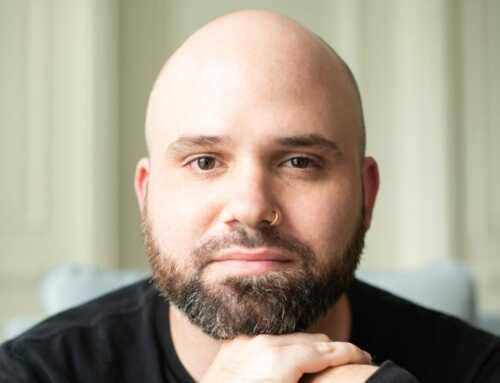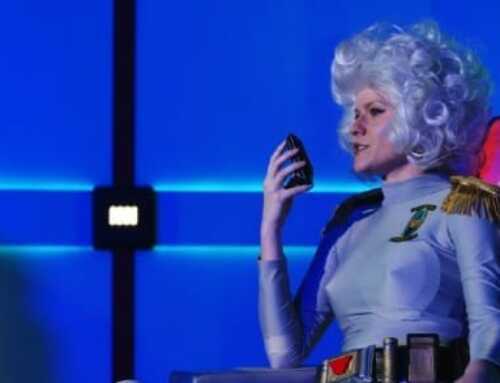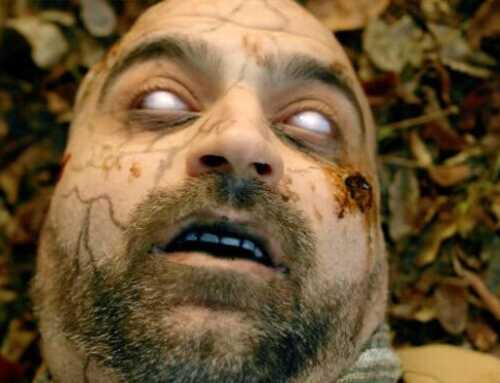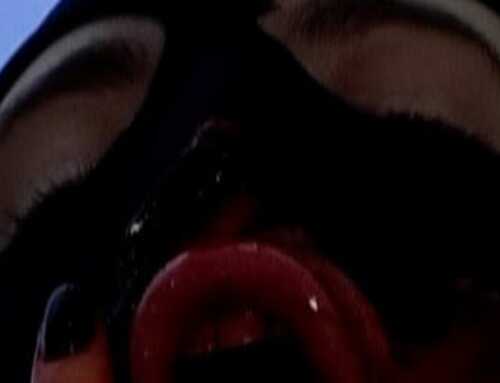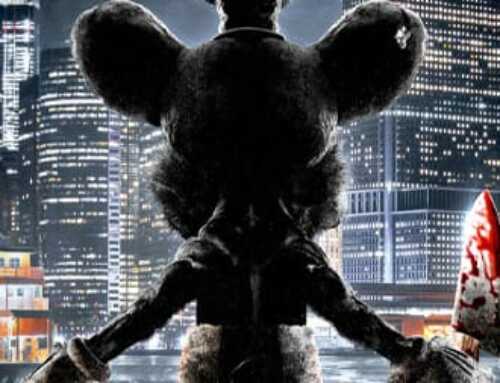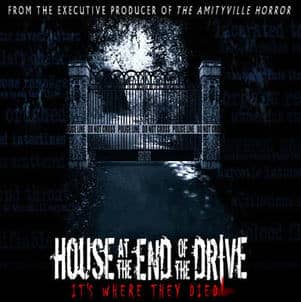 The “new” film House at the End of the Drive screens this week at Stan Lee’s Comikazee, with film producer David Oman on hand. House tells a fictional story that is inspired by very real, very grizzly events. In the film, David (James Oliver) is a well-off bachelor who finds himself at the end of another relationship. Picking up his belongings and loading them into his convertible, David seeks solace in visiting his friend Robert (Jonathan Mangum) and Felicia (Angela Jones).
The “new” film House at the End of the Drive screens this week at Stan Lee’s Comikazee, with film producer David Oman on hand. House tells a fictional story that is inspired by very real, very grizzly events. In the film, David (James Oliver) is a well-off bachelor who finds himself at the end of another relationship. Picking up his belongings and loading them into his convertible, David seeks solace in visiting his friend Robert (Jonathan Mangum) and Felicia (Angela Jones).
“What are you gonna do now?” Felicia asks as David sits at her dining room table, toking up, frustrated, and at a loss. Robert, who happens to be a real estate agent, suggests looking at a home in the area as a bachelor pad. David moves in, begins to settle, and this is where the story begins to get interesting. At first the signs are subtle; shadows dart by doorways, blurry apparitions appear in the periphery, and David’s dog tends to stare endlessly at things that aren’t there. Then there are, of course, the violent nightmares. Ah, home sweet home.
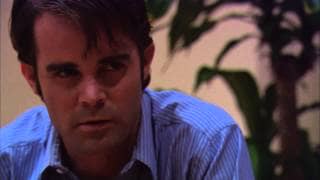 Sensing David is becoming stranger and stranger, his doting friends suggest a new love interest. Enter Jennifer (Alison Raimondi), a lovely blonde whose smile lights up a room bringing levity to David’s odd behavior. Alas, we discover there is a reason why the lights in David’s home have been fluttering, why he has been seeing light orbs dancing in his living room, and why the toilet has been sporadically erupting in fountains of blood. As it turns out, David purchased a home that was mere feet from a notorious mass murder in the Hollywood Hills. What’s more, his new love interest may have a tie to the crime that occurred 47 years ago in the house at the end of the drive.
Sensing David is becoming stranger and stranger, his doting friends suggest a new love interest. Enter Jennifer (Alison Raimondi), a lovely blonde whose smile lights up a room bringing levity to David’s odd behavior. Alas, we discover there is a reason why the lights in David’s home have been fluttering, why he has been seeing light orbs dancing in his living room, and why the toilet has been sporadically erupting in fountains of blood. As it turns out, David purchased a home that was mere feet from a notorious mass murder in the Hollywood Hills. What’s more, his new love interest may have a tie to the crime that occurred 47 years ago in the house at the end of the drive.
Inspired by producer David Oman’s real-life experiences, the movie is an attempt to honor the victims of the Tate murders of 1969 without bringing notoriety or attention to those who committed the heinous acts. While a very noble way to approach the material, the film doesn’t allow the viewer to make the connection on their own, and instead chooses to force feed the parallels, going so far as to open with actual newsreel footage from the Tate Murders. The intended effect here was to inform the audience, but it is simply confusing. Seeing the footage at the outset, we make the assumption that we are to see a film depicting a world in which those murders existed. The movie that follows is entirely somewhere else. The newsreel footage would have been far more effective being played as the credits rolled, leaving the viewer to make the connections afterward instead of asking them to spot them along the way.
Issues aside, the film itself is a consistently entertaining ghost story. All of the right story beats are there, punctuated with just enough scare factor to keep things interesting.
In real life, paranormal paramour Oman did purchase land, a mere 150 feet from 10050 Cielo Drive, the location of the infamous crime that left actress Sharon Tate, writer Wojciech Frykowski, coffee heiress Abigail Folger, celebrity hair stylist Jay Sebring, and friend Steven Parent dead. Also, in real life, Oman claims that his home, which was built long after the murders, is frequented by the restless ghosts of the victims, among many others.
To say that his claims are baseless would be a lie. During my visit to the Oman house to screen House at the End of the Drive, the spirits were particularly active and social. While standing in an adjacent room, one particular figurine among many atop a freshwater fish tank fell over (or was knocked over) 4 separate times in as many directions. Oman assured me that this was the spirits way of saying hello and welcome. It was actually very sweet. In another instance, during the actual screening of the film, we heard faint voices coming from the hallway behind us. I assumed it was part of the sound mix of the film until David asked me “Did you hear that?”
“Yeah, isn’t that, like, part of the movie? It sounds like there is a TV on in the other room.”
“Yeah,” David said. “Not part of the film.”
Without a doubt, House at the End of the Drive is a project from the heart. It memorializes the victims of the most notorious mass murder in Hollywood history. However, it suffers from a narrative whose intent is fiercely divided between reality, fiction, entertainment, and reverence for the subject matter. It is certainly worth seeing, but understand what you are seeing here before sitting down to watch. The film references the infamous Tate murders, but it is not about the murders. It is a ghost story, about a man haunted by the past around him. On that level, it works very well.
David Oman will be speaking at Stan Lee’s Comikazee this weekend along with sharing real video footage from his haunted home. Go, enjoy, get haunted.


